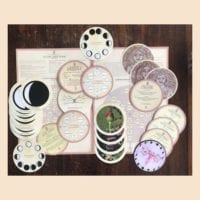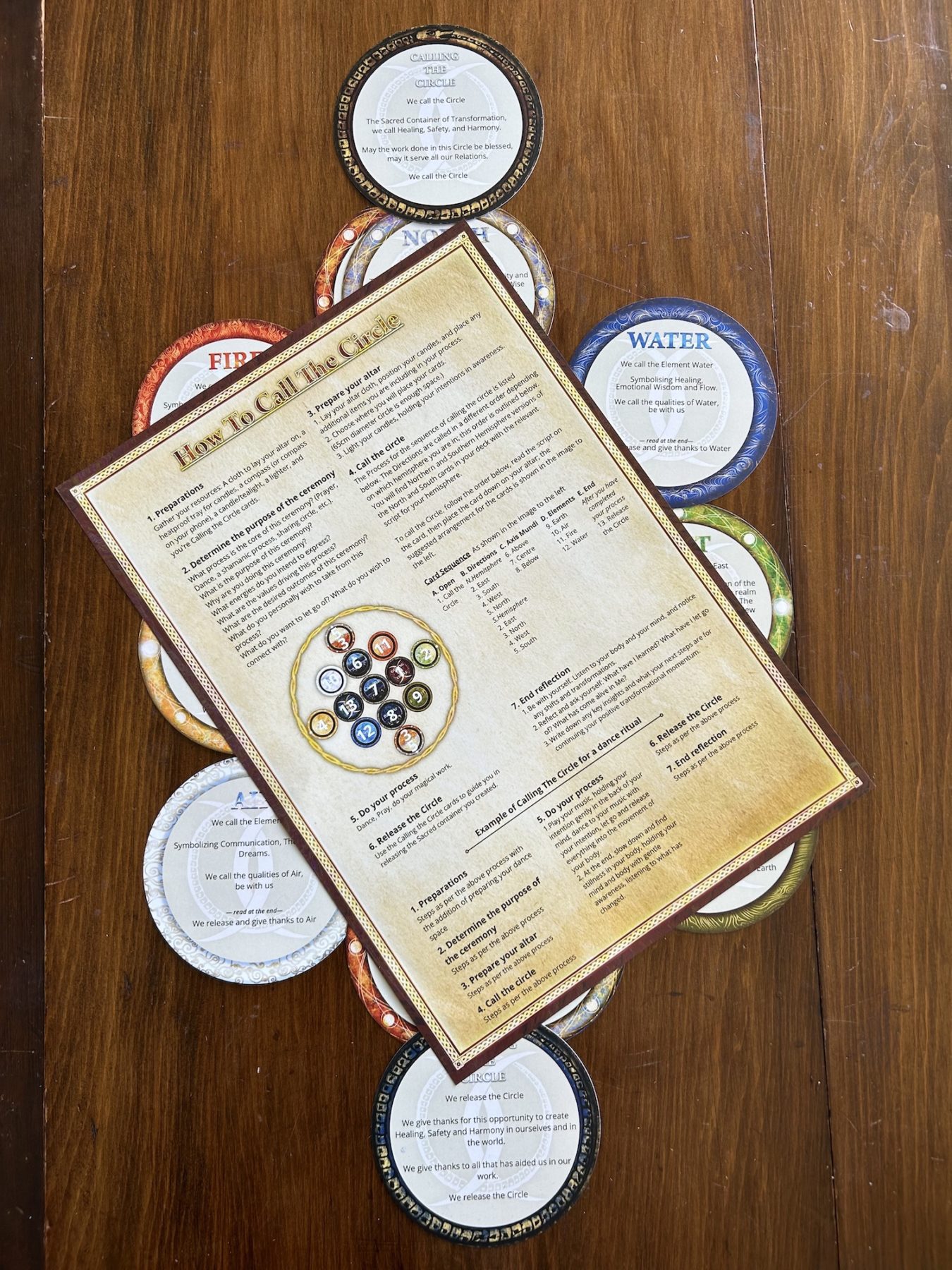MEDITATION DURING PREGNANCY
Facilitating The Natural State Of Birth
Spring 2013
Pregnancy is a time when a woman is more naturally in touch with her body and her inner self. Introducing a meditation practise can enhance the experience by creating a “way in” to her mind’s inner sanctum, she can then see deeper than her mind’s chatter and fears and connect with her calm inner core. Once she has established that connection, she can return to that place as desired or as necessary.
During labour, when women are acting intuitively and free of fear they choose to withdraw and focus internally, finding their calm inner mindspace. The hormones flowing in her blood stream at that point support, enhance and co-create this experience. If a labouring woman in this harmonious natural state is disturbed by others or disturbed by fear, her hormones change, she loses her focus, her labour may be pro- longed and or more painful and her baby may be jeopardised.
Using meditation as a tool, she can again access the appropriate mindspace that supports and is necessary for natural labour, and improve her experience and the outcome of her labour and birth, making it safer for her baby and herself.
The implication of this for childbirth is that a woman can choose to create a state of consciousness that is associated with a quicker and less painful labour and birth. When a woman in labour is undisturbed she focuses internally and has reduced beta brainwaves. If she is disturbed by people asking lots of questions or her own thoughts or fears, then her beta waves will increase, and the hormones in her body will change. She will be on alert, and will experience an increase in adrenaline. Adrenaline inhibits oxytocin, and there- fore slows down labour.
To best facilitate the natural process of birth, the labouring woman needs to feel safe, and have her physical and emotional needs met. Once in this situation, she can relax her mind as per meditation, be in an aroused or relaxed body state and access deep levels of consciousness. Then she can connect with her innate body wisdom and give birth in a blissful painless state of complete awareness – the evolved mind state.
This is the biologically intended space from which to give birth
Accessing Alpha Waves
All that is required to access this state, if she is not already there, or comes in and out of it too often (in- creased beta waves) is a method of creating alpha waves, such as:
- focus on the breath
- making constant deep sounds (toning)
- constantly staying physically and mentally relaxed (letting go of body tension and thoughts or fears)
- reduced mental and sensory stimulation – a darkened environment, being in water and undisturbed
The work of French Obstetrician, Michel Odent supports this. He suggests women labour in an environment that is quiet and dark, with access to water. The basis of this is to reduce the neo-cortical activity of the brain, by reducing mental stimulation, so as to enable the Reptilian brain (the part of the brain responsible for non-thinking automatic natural normal body functions) to “get on” with the function of labour and birth.
Neo-cortical stimulation (producing beta waves) – like answering questions and thinking of any sort, disturbs the natural process that births the baby. Women need to be protected and cared for in labour so that they can quietly retreat to their inner world. Labour and birth are about letting go, and to give birth a woman needs to let go in the same way that she does to orgasm. A quiet, focussed mind, such as meditation reminds us of, is the best mindspace to labour and give birth from.
A woman who is being fussed over or who is in a state of fear (her own or others projected onto her) will not labour as efficiently as she might without that and her baby will be at risk of distress as a result of the adrenaline hormones that are released. Women often stop labouring until they can move back into a calm quiet space without distraction.
A Bridge To Theta & Delta Waves
In labour, when a woman flows with the energy of the contractions, withdrawing into herself, she will focus – single pointedly on the physical sensations, the pain, her breath or a visual image – creating the alpha bridge to the other brain waves and therefore access theta and delta waves. In this brain wave state she can experience the deep knowing of delta and feel as many women report – a connection with all women who have or are giving birth. This gives a great inner strength and often much less or no pain. This will only occur when the woman is undisturbed.
Women who meditate in pregnancy have reported easy birth experiences, often painless and often ecstatic. It seems that when birth is approached from a place of trust it can unfold in its natural way and be a positive initiation into motherhood. If this is possible for some women it is possible for all.
Connecting With Intuition & Body Wisdom
A meditation practice can help one understand the way their mind works. By bringing an awareness to the process of thought, one is able to choose to control the “chatter” and in so doing, isolate from the thoughts, the fears. Fears can rule over an individual’s life, creating whatever it is that is feared. Acknowledging fears is the first step to being freed from them.
Fears are simply thoughts, they carry with them emotion and are retained and maintained by choice.
As is well known, birth from a fearful state results in an inability to ‘let go’, long labours, intervention and increased morbidity (damage) and mortality. The way birth is managed in our modern culture is a reflection of the beliefs and fears held about women’s bodies and the natural process of birth. The pregnant woman encounters everyone’s opinions and viewpoints on the matter and is often subject to procedures that have unwanted side effects (often these are not known to her) without her informed consent, using fear to get her to agree to them.
In the birth setting, if she has not chosen who will be present (such as for a home or birth centre birth) she will have people in attendance who will not necessarily be aware of the effect they will have on the natural unfolding of her unique birth experience. However, by simply focussing on her breath, and other easy meditation techniques to be discussed, she can alter her state of consciousness enabling her to connect with her intuition and body wisdom.
This will best facilitate the natural process as well as reveal to the woman obstacles such as fears or the adverse presence of someone, that may be inhibiting her from letting go and giving birth.
What is Meditation?
Meditation is the act of observing the mind, the practise of training the mind and a technique to master the mind.
Observing the mind separates ourselves from our thoughts, allows us to notice that we are not our thoughts, we just think them.
Training the mind to let go of thoughts or detach from them, to stop thinking, provides us with access to a clear mindspace. Practising this technique regularly, improves our ability to do it.
The first thing that happens when starting a meditation practise is an awareness or mindfulness. Mind- fulness is attention and can be applied to our movements, our physical sensations, our feelings and our thoughts. When we are attentive to ourselves in this way, we are in the present moment, noticing. When we are not in the present moment, we are in our thoughts, fears or pains of the past or the future. Being in the present moment, noticing, mindful, we provide ourselves with our witness and therefore choice about what we think or do at anytime.
We find who we really are – the thought creator. When we know this about ourselves we cease to just be a series of prerecorded responses to stimuli that we have gathered from our experiences over our life. Meditation is actually about accessing various brain wave states. Of course one already does this often and regularly. By understanding the way our brain works and by training it, we can do this when we want to, to bring about the positive effects. It takes practise and like all exercise, regular dedicated time will bring the best results.
Electrical impulses flow through the brain creating currents of electricity or brain waves. The amplitude or power of the impulse is measured in microvoltage and the frequency of the recurrence of the impulse is measured per second. It is the frequency that determines the category of brainwave and the combination of these that determines one’s state of consciousness.
The Qualities of Different Brainwaves
An Electroencephalograph (EEG) measures brain activity as waves. There are four main brain waves:
Beta – 14-38 cycles or waves per second (hertz)
The conscious mind, daily active life, logical thoughts, multi-tasking, decision making, complex problem solving.
Being in this state is fine for awhile but because it is associated with increased metabolism, too much creates a buzzing feeling, leading to stress, inability to focus and in excess – panic with thoughts coming thick and fast, on top of each other.
Alpha – 8-14 hertz
Single pointed focus, relaxed detached awareness, receptive mind.
Reading a book, losing sense of time, day dreaming, eyes closed, and flitting from one image to another. It is from the alpha state that one then accesses the slower and deeper mind states, it forms a bridge to the theta and delta states.
Alpha brainwaves are necessary for one to remember dreams and meditations, they are the witness aspect. Too much alpha creates a “spacey” feeling.
Theta – 4-8 hertz
The subconscious mind, memories, emotions, sensations, creativity and inspiration and “a ha” realisations. Theta waves are present during dreaming (which provides stress release), deep meditation and peak spiritual experiences and insights, and also when you feel a thought coming to you from somewhere deep inside or along way away (a memory ‘on the tip of your tongue’).
Delta – 0.5-4 hertz
The unconscious mind (ought to be named deep-conscious), deep sleep (where healing and regeneration takes place).
In combination with wakeful brainwaves delta waves are associated with intuition and instincts, strong empathy, connection with a deep knowing, thought transference and exchange.
Delta waves are as if your radar.
During breastfeeding, Mother and baby’s delta brain waves synchronise. The feelings reported by women during breastfeeding are deep satisfaction, serenity and overwhelming love and connection with their baby.
We usually always experience a combination of brain waves. The brainwave pattern of meditation and other trance states like contemplation, prayer, hypnosis, guided fantasy, visualisation and deep relaxation, are reduced beta, continuous alpha and intermittent to increasing theta.
Theta accesses the subconscious and alpha enables one to remember the experience. Sex – particularly Tantra , types of dancing such as Sufi whirling, or simply being ‘lost in the moment’ of dance and music can bring about similar states. Through observing the EEG readings of advanced meditators, Yogis and Yoginis and expert sports-people (ie individuals who have experience with control over their minds) several states of consciousness have been described. Of particular interest are the Awakened mind and the Evolved mind, as described by Anna Wise in her book “The High Performance Mind”.(1)
The Awakened & Evolved Mind
The Awakened mind is a combination of continuous alpha and theta with or without beta (by choice). It is characterised by clarity of the mind yet feeling in an altered state, feelings of deep satisfaction, intense alertness, calmness and detachment, sensations of disappearing from the environment or your body, extreme vivid imagery when desired and intuitive insights. During this state it is possible to either be process- ing, creating, developing or healing – which would involve beta waves or without that, a deep meditative state without beta.
The Evolved mind, a circular pattern of beta, alpha, theta and delta, is described by most spiritual traditions as the very highest state of awareness or evolution, where the unconscious mind becomes conscious. There are no divisions between the conscious, subconscious and unconscious, one feels a unity with all things and beings.
Meditation is usually associated with a relaxed body, however it is possible to access deep states of
consciousness with an aroused as opposed to relaxed body. This is practised with various forms of martial arts and moving meditations and referred to as “being in the zone” by sports-people engaged in highly fo- cussed sporting activities. Understanding how to change one’s brain waves and knowing the body sensations heralding particular states, it is possible to master one’s mind and create desired states of consciousness in particular situations.
A meditation practice can help one understand the way their mind works. By bringing an awareness to the process of thought, one is able to choose to control the “chatter” and in so doing, isolate from the thoughts, the fears. Fears can rule over an individual’s life, creating whatever it is that is feared. Acknowledging fears is the first step to being freed from them.
Fears are simply thoughts, they carry with them emotion and are retained and maintained by choice.
How to Meditate
There are various ways to meditate and many books written on the subject. It is up to you to find the way that works best for you.
Here’s a simple method:
- Put yourself in a quiet place where you will not be disturbed, without a full stomach, be warm, out of drafts and comfortably seated with a straight
- Close your eyes, relax your tongue and the whole of your
- Bring your awareness to your breathing, notice and count the duration of your inhalation and then your exhalation.
- Slow them down to 3 or more seconds each, breath deeply into the base of your lungs, you may notice your abdomen rise and fall with each
- The desire at this stage is to achieve single pointed focus (to induce alpha waves), you can do this by count- ing your breaths, count to ten and then start again, or by visualising yourself in a safe place in
- When thoughts enter your mind, don’t engage with them, witness them and let them
See your mind as if the ocean, these thoughts will come drifting past you like a message in a bottle floating on the surface of the water, simply put – don’t open the bottle, it will float away.
- Continue counting your breaths, you may enter a state where images appear and you lose awareness of your limbs, this indicates theta
When you find your quiet inner mind, you can simply stay there, watching what happens, or introduce a question for contemplation. In a state of increased theta waves, you may encounter relevant issues in need of attention. Such as an unanswered question you have or a fear, or outmoded belief you hold that needs review. These are the gifts of meditation and the opportunities you give yourself for refinement of your self.
The uncovering of these sorts of things, one of the most important reasons for meditating in pregnancy, will happen more often if you ask for them. Simply set an intention, eg. During this meditation I give thanks for my noticing any blocks I may have to…
You can also be quite specific in what you go looking for, eg. imagine a particular scene, who is there? What time of day is it? You can also detect blocks you have in your subconscious mind (because that’s where you are visiting) that may influence your experience. Visualise – by imagining – your desired outcome, does it stop anywhere? What happened?
Notice what happens when you do this and then apply your conscious mind to it after meditation. Return again to that image next time with any changes you make to your ideas about yourself or the situation. Creative visualisation, imagining the whole scene how you want it to be, is a useful tool to use during meditation.
- At the appropriate time, you will know when that is, slowly bring your awareness back to your breath and your
- Wiggle you fingers and toes and slowly stretch your whole
- Take some deep and quicker breaths and notice how it feels to be awake compared to where you
This will assist you in knowing the difference between these states and help you know where you are in the process of meditation. Following this wake up phase, in order that you remember insights or content from your meditation, it is important to put them into thought form.
“The best way to do this is through words. Writing or speaking about the experience immediately after you have completed it will draw the contents up into your beta mind so that you can retain them consciously.” Anna Wise
Have your journal nearby and jot down key words from your experience to be added to. Draw or describe pictures or feelings. All this will assist you in knowing the details behind your beliefs and therefore your experiences. Sometimes people go to sleep when they intend to meditate, this happens when they go into pure delta. Ways to avoid this are to sit rather that lie down and to meditate with your eyes half open but not focussed.
There are some things you can do to bring on alpha waves – the bridge to the deeper levels of consciousness, as they are physiologically linked to your eyes.
- Start the process by shutting your eyes, breath a few times, then open your eyes half way, don’t focus on any- thing, hold them there for 5 seconds, then shut them
- Breathe for 5 seconds, then open your eyes only a third of the way, don’t focus and stay for 5 seconds, then shut your eyes and continue with your breath counting. Or roll your eyes upward into your head, gently holding them there and focussing on the inside centre of your forehead, only do this for a few breaths to avoid straining the muscles of your
Guided meditation, trance work and hypnosis are other techniques that can be used to create and access deeper levels of consciousness. As with meditation these practises can be done for the personal physical and psychological effects, and for purpose of praying and any activity can become a meditation and often does for those who bring what they learn from meditation into their daily lives.
Basically it is about being focussed, not distracted, having the clear intention to trust in yourself, letting go of fears and flowing with whatever comes next, being fully present in the moment.
(1)Wise A. “The High Performance Mind” Putnam Books, New York 1995
Benefits Of Regular Meditation
- Lowering of blood pressure
- Slowing of pulse rate
- Improvement in circulation
- Deeper, slower breathing
- Reduction of harmful lactic acid in body
- Stress and tension levels dramatically reduced
- Improvement in length and quality of sleep, also easier to get to sleep
- Improvement in concentration
- Increase in perceptiveness
- Reduction in tendency toward addiction (to food, alcohol, drugs tobacco)
- Improvement in memory
- Increased sense of general wellbeing
- Reduction of the hormone cortisol which is known to induce stress
Recent Posts
MEDITATION DURING PREGNANCY
DOWNLOAD PDF VERSION MEDITATION DURING PREGNANCY Facilitating The Natural State Of Birth Spring 2013 Pregnancy is a time when a woman is more [...]
MORE ON MAGA – THE AUTUMN SEASON OF OUR LIVES
DOWNLOAD PDF VERSION MORE ON MAGA - THE AUTUMN SEASON OF OUR LIVES Times Are A-Changing Autumn 2011 There’s a lot of life [...]
MOON PHASES
DOWNLOAD PDF VERSION MOON PHASES Moon Phases and Corresponding Energy The energy of each phase of the moon is the governing principle of [...]
RECLAIMING MENARCHE
DOWNLOAD PDF VERSION The Red Thread Spring 2012 RECLAIMING MENARCHE Spring is here and its such a beautiful feeling to be really amongst [...]
UNDERSTANDING THE CYCLES
DOWNLOAD PDF VERSION UNDERSTANDING THE CYCLES Everything goes through cycles, everything. Spring 2013 And every cycle is reflected in every other cycle, they [...]
CHANGE OF NAME TO THE SCHOOL OF SHAMANIC WOMANCRAFT
DOWNLOAD PDF VERSION Origins of the School’s Name Summer 2016 The School, formerly known as the School of Shamanic Midwifery, founded by Jane [...]
Visit the Shop



















